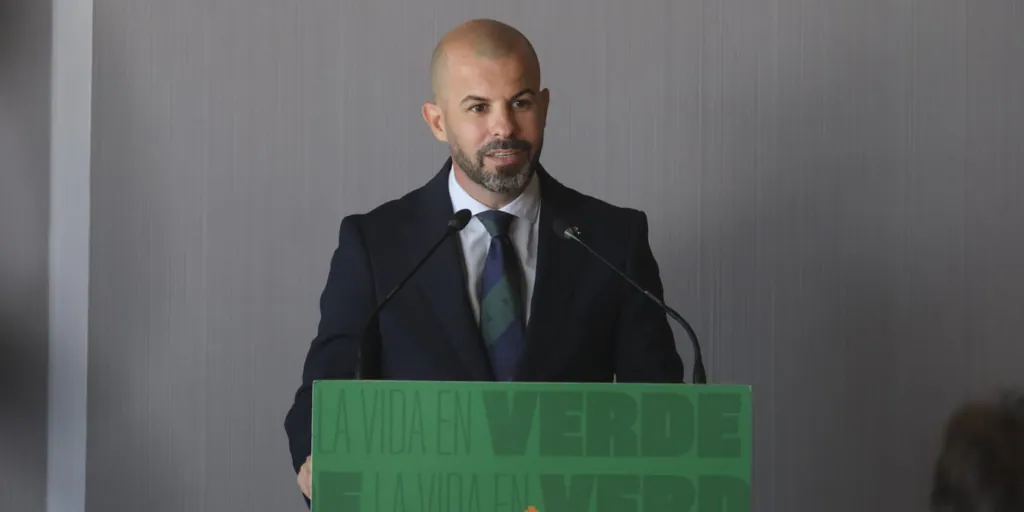
It’s one of the best-known stories about the First World War: the Christmas truce of 1914, when soldiers from both sides spontaneously laid down their guns and, for a few hours at least, acted as if they weren’t trying to wipe each other out in a cruelly pointless war.
Part of the story was the football match that broke out in No Man’s land. The image of the two sides uniting, in a manner of speaking, over the common language of sport became incredibly evocative, a slice of normality amidst the horror.
It’s gone down in English mythology, encouraged by appearances in various elements of culture, from art to history books to things such as the TV comedy Blackadder. “Remember it? I was never offside, I could not believe that decision…” the titular character says when asked if he recalled the match.
It’s certainly a fantastic image: a ball emerging from somewhere, a pitch being marked out between bits of barbed wire, an elderly colonel — probably with a preposterous moustache — being appointed referee, Mausers for goalposts.
The trouble is, while the story of the Christmas football match isn’t quite a myth, it didn’t actually happen like that.
What is true is that there was a truce. On the morning of Christmas Day, 1914 — the war only six months old at that point but already bloody and horrific — there was a brief and unofficial halt to hostilities, and soldiers from both sides met in No Man’s Land. That in itself is a pretty extraordinary thing; that the two sides even contemplated emerging from their trenches when usually just a mere peek over the top was an invitation to be shot at.
British and German officers meeting on December 25, 1914 (Daily Mirror/Mirrorpix/Mirrorpix via Getty Images)
There are assorted stories about how it happened, but the most commonly accepted version of events is along the lines of that described by Private Leslie Walkinton, as quoted in Anthony Richards’ book The True Story of the Christmas Truce.
‘On Christmas Eve we’d been singing carols… the Germans had been doing the same. And we’d been shouting to each other, sometimes rude remarks, more often just joking remarks. Eventually, a German said, ‘Tomorrow you no shoot, we no shoot.’ The morning came and we didn’t shoot and they didn’t shoot and so then we began to pop our heads over the side and jump down quickly in case they shot, but they didn’t shoot.
‘And then we saw a German standing up waving his arms… it gradually grew and eventually several people were walking about and nobody was shooting. After a time some bold people walked out in front of their barbed wire entanglement and finally an Englishman and a German met halfway across No Man’s Land and they shook hands and laughed and joked and waved to their companions to join them.’
The soldiers met and talked, and exchanged rations — cigarettes, bits of cake, any small luxuries that they had managed to keep in their trenches. There was even a report of a German soldier getting a haircut from an English counterpart. There was a language barrier in some instances but many of the Germans spoke pretty good English. A spirit of genuine bonhomie seemed to form, albeit laced with some suspicion that it was all just a cunning ruse to get the enemy out into open land. Some of the British soldiers used the opportunity to sneak a peek at the German trenches, which were much better appointed than their own.
British soldiers in a Flanders trench in October 1914 (Hulton Archive/Getty Images)
At this point it’s worth pointing out that the ‘Christmas Truce’ wasn’t one big organised thing, but actually a series of ‘mini truces’, dotted along the front lines. “You had one area where the soldiers were out fraternising, then a few hundred yards away they were still shooting at each other,” says Richards, head of documents and sound at the Imperial War Museum in London. Most of these were on the French-Belgian border, around towns like Ypres and Messines.
And this is where the football comes in. Alas, the idea that one big, organised game took place is simply inaccurate, and many historians get quite prickly at its erroneous prominence in the story of the Great War.
“It’s almost become part of the shorthand of describing the First World War,” says Richards. “People think of football, of poppies, of war poets and so on. Although all those things are important, they’re not really what it was like.”
What does seem to be the case though, is that several smaller, much less formalised ‘kickabouts’ took place in various parts of No Man’s Land, which may explain the widely varying accounts of football and its role in the truce.
“From somewhere, somehow, this football appeared,” said Ernie Williams, a 19-year-old English soldier who was in the trenches near Messines, now called Mesen, in Belgium. “It came from their side… they made goals and one fellow went in goal and then it was just a general kickabout.
“I should think there would be at least about a couple of hundred (taking part). I had a go at it. I was pretty good then, at 19. It was a proper football but we didn’t form a team, it wasn’t a team game in any sense of the word, it was like how I learned my football in Hill Gate streets… you know, it was a kickabout, everybody was having a go. There was no score, no tally at all. It was simply a melee.”
Other accounts suggested the ball came from the English side. “Suddenly, a Tommy came with a football, kicking already and making fun, and then began a football match,” wrote Lieutenant Johannes Niemann of the 133rd Saxon Infantry Regiment. “We marked the goals with our caps. Teams were quickly established for a match on the frozen mud, and the Fritzes beat the Tommies 3-2.”
And still others said there wasn’t really a ‘ball’ at all. “We tied a sandbag up, an empty sandbag, we tied it up with itself in string and kicked it about on top,” said George Ashurst, while a letter to the Guardian, published on 31 December 1914, said some soldiers kicked a “bully beef tin” about instead of an actual football. Other accounts suggested that a game was proposed by one side or the other, but was turned down.
Another interesting development came some 110 years later and suggests that football was prevalent at other times of the war. The painting ‘Gassed’, by John Singer Sargent and commissioned towards the end of the conflict, ostensibly depicts a group of soldiers suffering from the aftereffects of mustard gas.
It recently underwent some conservation work which revealed a few men playing football in the background. It’s not known if this reflected an actual scene that Sargent witnessed, or was simply a depiction of war-time events and possibly inspired by the stories of the Truce, but it’s fascinating nonetheless. The painting is available to view in a new gallery at the Imperial War Museum.
(Image: Imperial War Museum)
Several statues and memorials have been established to remember football’s role in the truce. There’s one at the National Memorial Arboretum in Staffordshire. One has been on a bit of a tour: it was initially placed outside St Luke’s Church in Liverpool, then was outside Goodison Park for a spell and eventually made its way to Mesen, near where one of the games was said to have taken place. A commemorative match was staged in 2014, between teams from the British and German armies.
It is, of course, extremely difficult to verify any of the stories for sure. Many accounts were given years later and could be compromised by time and the psychological horror of the conflict. There are no photographs; one famous image of soldiers playing football has been incorrectly attributed to the 1914 truce but, in reality, it depicts servicemen playing somewhere in Greece, a year later.
But there are enough different reports to suggest there is some veracity to the tale. At the very least, we can be confident that there were some games, informal though they may have been, that took place that Christmas Day.
“The way to understand the football is that these guys were living in trenches,” says Richards, “and the truce gave them the opportunity to get out and run around, which was a huge novelty. If you were a young working-class soldier, that would have been the natural thing to do. You just kick a football, run around and have a laugh.”
It’s worth emphasising that these soldiers — mostly young, working-class men, sent to die in a war of uncertain purpose — were essentially living in hell. Their trenches were mostly just mud, riddled with disease, and if they raised their head out of the mud they had a pretty good chance of being shot. A brief moment of respite, through talking in the open air to fraternise with their theoretical enemies, or kicking a football around for a bit, was just a small hint at normalcy, at humanity.
One of the most extensive chroniclers of the war was Henry Williamson, an author who would later become most famous for writing Tarka the Otter. He was on the front line during the Christmas Truce, and when the war was over wrote A Chronicle of Ancient Sunlight, a 15-volume account of the conflict which discusses, among many other things, 1914 and what it all meant.
Williamson was born in 1895 but remarkably his son, Harry, is still around.
“Talking and writing about the ‘Great War’ became his way of dealing with it,” says Harry now, from his home in Australia. “He saw friends of his go crazy — soldiers who couldn’t bring themselves to talk about it and became less and less able to live with themselves. He was lucky to have an outlet for creative expression. I think the more he told his stories, the more at peace he felt.”
Harry recalls his father mentioning football taking place. “The story had been that they saw the Germans kicking a football about, and eventually coming out onto the land between the sets of trenches. They offered the English to come and play football, and the English were initially worried whether they should be machine-gunning them or going to play football with them. What a choice to make.”
Harry, who went on to be a successful musician, tells an extraordinary story about playing a concert near his father’s home. “The next morning he said with all the lights and the noise, he felt he was back in the war, reliving the bombardment that preceded each attack. I realised then his psyche had never fully recovered. Our entertainment was his nightmare.”
Andrew Edwards’ statue now resides in Mesen, West Flanders (Arterra/Universal Images Group via Getty Images)
We have to point out that, after the war in the 1930s, Henry Williamson became involved in the British fascist movement, and was good friends with Oswald Mosley. He was interred for a time during the Second World War as a potential enemy sympathiser. He was at the Nuremberg rally in 1923, but Harry is at pains to point out that he had no affiliation with the Nazis and was there as a photojournalist for The Daily Express.
All of which should not negate his accounts of being in the trenches. One of the key elements of Henry’s reminiscences was the idea that sharing a universal sport effectively humanised, to a great extent, the Germans for the English soldiers.
“We must remember the newspapers of the time reported the government propaganda, that the Germans ate babies for breakfast, that they were monsters, and inhuman,” says Harry. “Propaganda is insidious. Its effect lasts if it’s ‘well done’. It can stay with you a long time, even if your conscious mind says it’s ridiculous.”
The German perspective on the Christmas Truce is an interesting one. The First World War generally is not as prominent in the collective consciousness as the Second World War. Within that, the Truce is well known, but while the football forms a significant part of the war mythology in England, it is barely discussed and not well known in Germany.
This is probably one of the reasons why Ralf Marczinczik’s comic on the subject made such an impact. In 2013, the German Academy of Football invited submissions for competition: draw a one-page comic about ‘the idea’ of football. Marczinczik happened to be reading about the First World War at the time, and idly wondered if any of the soldiers had played while in the trenches.
“I didn’t know a soccer game took place,” he says. “The Christmas truce is a well-known story — it’s been in some films, and in a graphic novel from the late 1990s, but there is no mention of soccer whatsoever. Even when I started researching, the soccer element was just a footnote.
“But I thought, ‘What if someone had just kicked a ball around in the snow?’ Then with a bit of research, I found out that, yes, there was a small game. Just some guys, tired and cold, kicking the ball around. So I thought this was just too perfect an opportunity to pass by.”
His comic, ‘Niemandsland’, struck a chord and won the competition along with its €5,000 first prize, which changed Marczinczik’s career. Even though the story isn’t widely known in Germany, he managed to encapsulate why the tale of football between the trenches stuck — and became so evocative over the years.
“The idea behind it is to bring soccer back to the human interaction. It’s not a contest, but there’s a human connection in playing together, not being in teams but taking part in one activity.
“The point I wanted to make is that there is something that connects us deeper than nations, some basic humanity that took place.”
The Christmas Truce was never repeated. Partly because the increasing use of heavy artillery rather than rifles made it more difficult. Partly because it was never an ‘official’ thing anyway, a relatively spontaneous act by pockets of increasingly desperate men. But mainly because those in command on both sides promised pretty severe penalties for anyone who laid down their arms again.
The extent to which football was played on Christmas Day 1914 may have been exaggerated. There was almost certainly no formalised game. But for a few minutes, a group of scared, tired and horrified young men did something that made them feel human again.
(Header design: Eamonn Dalton/images via Getty Images)






